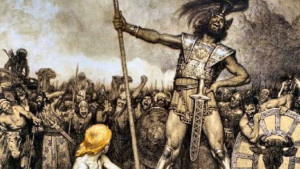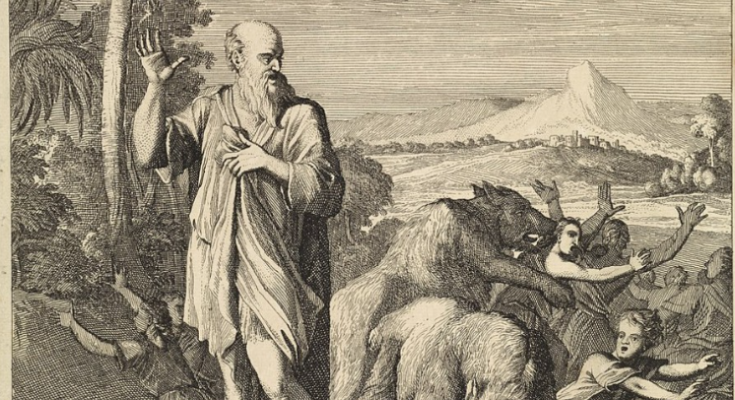
Facts About Bible Stories That Made Us Say “Really?”
The Bible is one of the most widely read, quoted, and debated books in history. For believers, it’s a sacred text; for scholars, it’s a rich tapestry of history, literature, and theology. But no matter your perspective, there are moments in biblical stories that make you pause and think: Wait… really?
From talking animals to unusual miracles, the Good Book contains details that are unexpected, puzzling, or downright strange by modern standards. Here are some of the most eyebrow-raising facts from Bible stories that make us say “Really?”
1. A Talking Donkey Calls Out Its Rider
Book: Numbers 22:21–34
The prophet Balaam is riding his donkey when the animal suddenly refuses to move. The reason? An angel of the Lord is blocking the road — visible to the donkey but not to Balaam. After repeated beatings from Balaam, the donkey finally speaks: “What have I done to you to make you beat me these three times?”
The idea of a farm animal talking back like a character in Shrek is surprising enough, but it’s even more interesting that Balaam doesn’t seem all that shocked. He just… talks back. No screaming. No “Am I losing my mind?” Just an argument with a donkey in the middle of the road.
2. A Prophet Survives Inside a Giant Fish
Book: Jonah 1–2
Jonah is swallowed by a “great fish” (often depicted as a whale) after trying to run from God’s command. He spends three days and three nights inside the creature before being vomited onto dry land.
Even if you set aside the question of whether a human could survive inside a whale, the image of being in a dark, slimy stomach for days is, frankly, unsettling. The Bible focuses on Jonah’s prayer and repentance — but you can’t help picturing him emerging smelling like low tide.
3. The Sun Stands Still for a Whole Day
Book: Joshua 10:12–14
During a battle, Joshua prays for the sun to stand still so his army has more time to defeat their enemies. The text says the sun stopped in the middle of the sky for “about a full day.”
Whether you interpret it as a literal cosmic pause or a poetic description of God granting victory, the imagery is wild. If taken literally, it would have been a pretty dramatic astronomical event — and perhaps a nightmare for anyone with crops depending on regular sunlight cycles.
4. The World’s First “Snake Salesman” Talks Eve into Sin
Book: Genesis 3
A serpent tempts Eve into eating the forbidden fruit from the Tree of the Knowledge of Good and Evil. The talking snake’s sales pitch changes human history forever.
While the serpent is often interpreted symbolically (and later associated with Satan), on a surface level it’s an animal casually carrying on a theological debate. Imagine strolling through a garden and a reptile says, “Have you considered violating divine law today?” Really?
5. A Prophet Calls Down Bears to Maul Teenagers
Book: 2 Kings 2:23–25
After the prophet Elisha succeeds Elijah, a group of boys mocks him, shouting, “Get out of here, baldy!” Elisha curses them in the name of the Lord, and two bears come out of the forest and maul 42 of them.
Even if these “boys” were perhaps young men rather than children, it’s still a startling escalation from name-calling to wildlife attack. This passage has sparked many debates about justice, mercy, and, well, overreaction.
6. A Man Lives to Be 969 Years Old
Book: Genesis 5:27
Methuselah, the grandfather of Noah, is recorded as living for 969 years — the longest human lifespan mentioned in the Bible.
People have tried to explain this through symbolic numbers, different calendars, or miraculous blessing, but if you take it literally, Methuselah would have lived long enough to watch multiple civilizations rise and fall.
7. Jesus Curses a Fig Tree for Not Bearing Fruit
Books: Matthew 21:18–22, Mark 11:12–14
While traveling, Jesus sees a fig tree with no fruit and curses it, causing it to wither. The twist? It wasn’t fig season.
This story is generally interpreted as symbolic — representing spiritual barrenness or lack of faith — but on the surface, it’s an unusual image: a teacher with supernatural power taking issue with an out-of-season tree.
8. The Ark Holds Every Animal — Two by Two
Book: Genesis 6–9
Noah’s Ark is one of the best-known Bible stories: God instructs Noah to build a massive boat to survive a world-flood, bringing pairs of every animal species aboard.
Even if you read it as a theological narrative rather than a literal account, the logistics spark curiosity. Feeding, cleaning, and caring for that many creatures in a closed boat for months? That’s the kind of management project that makes you want a spreadsheet and a lot of air freshener.
9. The Apostle Paul Survives a Snake Bite Without Harm
Book: Acts 28:1–6
After a shipwreck, Paul is gathering firewood when a viper bites him. The locals expect him to die instantly, but instead, he shakes it off into the fire and suffers no ill effects.
This is impressive in any context, but imagine the bystanders’ faces — going from “He’s doomed” to “He must be a god” in a matter of minutes.
10. An Iron Axe Head Floats in Water
Book: 2 Kings 6:1–7
When a borrowed axe head falls into the Jordan River, the prophet Elisha throws a stick into the water — and the iron floats to the surface.
It’s a small miracle compared to plagues or resurrections, but it’s oddly specific. Scholars often note that it shows God’s concern for everyday problems… but it’s still a moment where you blink and think, “Did that just happen?”
11. People Are Healed by Peter’s Shadow
Book: Acts 5:12–16
In the early days of the church, people bring the sick into the streets so that even Peter’s shadow might fall on them as he passes — and they are healed.
It’s a striking image: a man walking down the street, and his shadow is as powerful as modern medicine.
12. The Earth Swallows People Alive
Book: Numbers 16:31–33
When Korah and his followers rebel against Moses, the ground opens up and swallows them — along with their households and possessions.
As far as divine punishments go, this one’s as dramatic as it gets. The ground literally becomes the judge and executioner.
Why These Moments Stand Out
Some of these moments seem strange because they don’t fit our modern expectations of narrative realism. Ancient audiences, steeped in oral storytelling, symbolic imagery, and miraculous thinking, might not have reacted with the same “Really?” we do today.
Others are striking because of their moral implications — especially when justice appears swift and severe. They invite discussion about the nature of God’s actions, human responsibility, and the role of symbolism in sacred texts.
Conclusion
The Bible is not a bland moral rulebook — it’s full of surprising, dramatic, and sometimes perplexing stories. Whether you view them as literal events, allegories, or theological parables, these moments keep readers engaged and spark conversations that have lasted millennia.
And maybe that’s the point: the “Really?” moments draw us in, make us question, and push us to explore deeper meanings beneath the surface.

